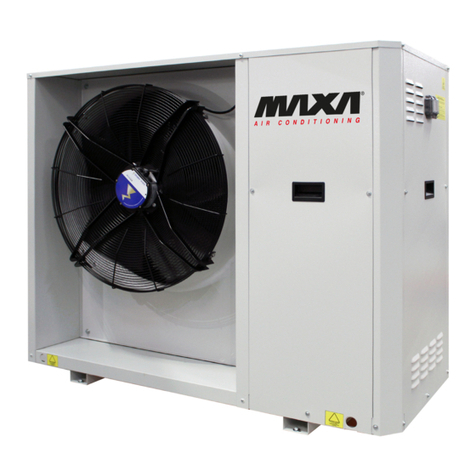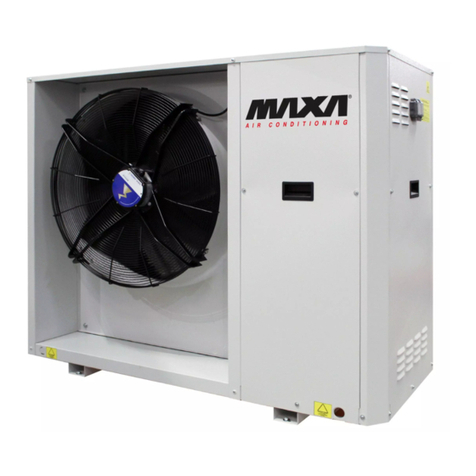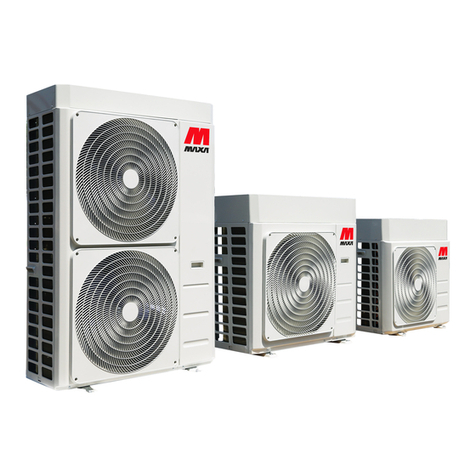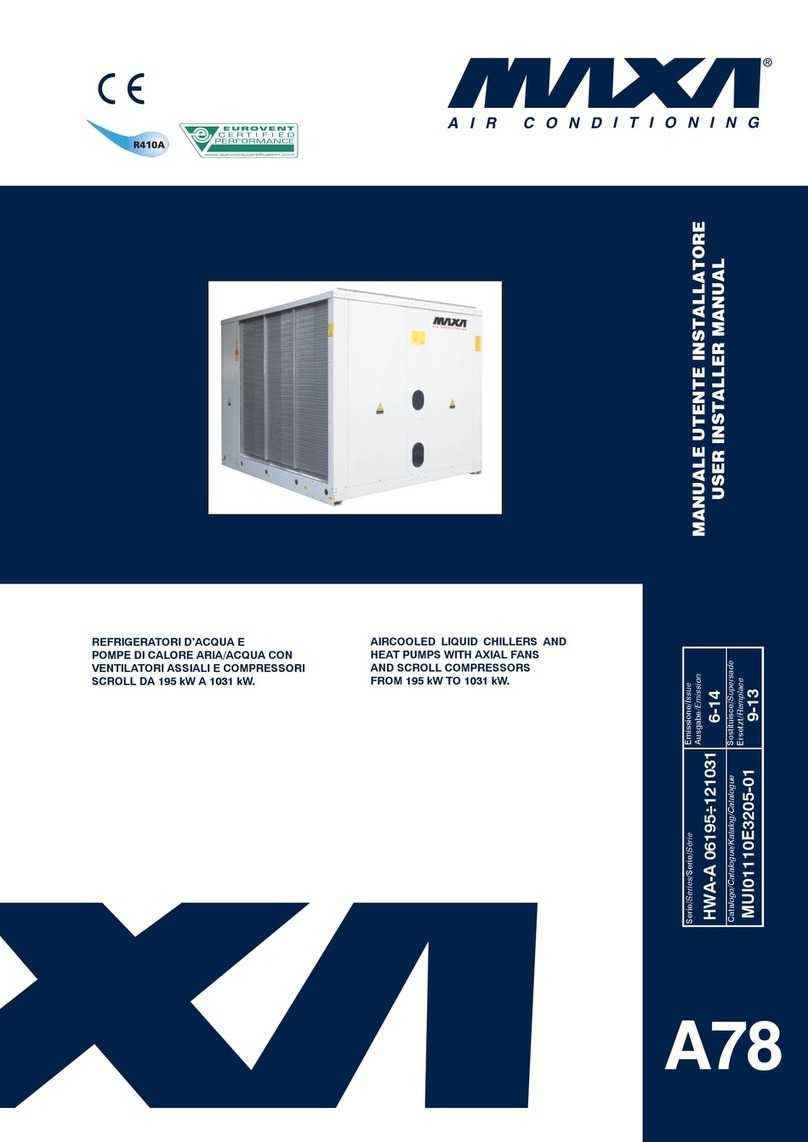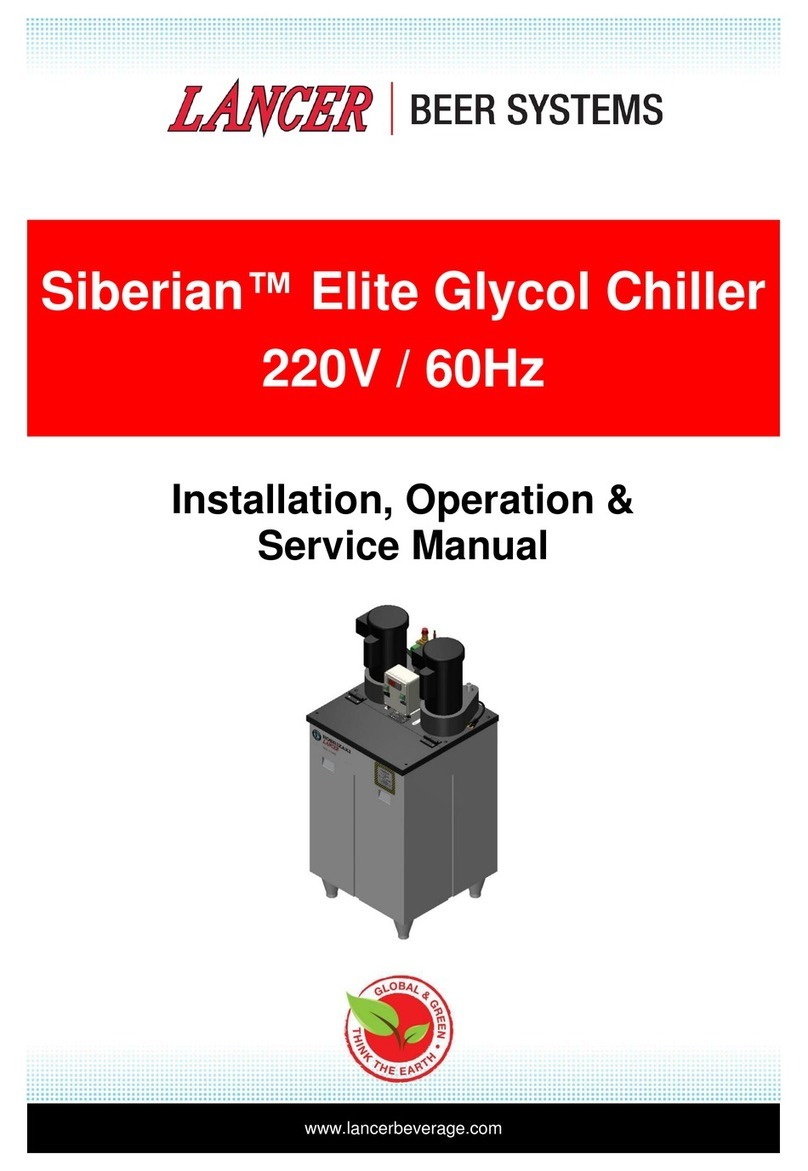HWA1-AAir/water chillers with axial fans
2
14.1 FREE-COOLING ......................................................................................................................................................................... 15
14.1.1 Ventilation in freecooling ............................................................................................................................................. 16
14.2 ENABLEMENT OF DOMESTIC HOT WATER PRODUCTION (DHW).......................................................................................................... 16
14.2.1 MEMORIZATION OF THE SENSOR IN HEATING MODE ................................................................................................. 17
14.2.2 SANITARY MODE CALL FROM DIGITAL INPUT .............................................................................................................. 17
14.2.3 REGOLATOR IN COOLING ............................................................................................................................................. 17
14.2.4 REGULATOR IN HEATING.............................................................................................................................................. 17
14.2.5 SANITARY VALVE REGULATOR...................................................................................................................................... 17
14.2.6 HEATING MODE ON DOMESTIC HOT WATER TANK ..................................................................................................... 18
14.3 SUMMER/WINTER MODE ROMOTE COMMUTATION.......................................................................................................... 18
14.4 PLANT REMOTE CONTROL (MANAGEMENT)........................................................................................................................ 18
14.5 DOUBLE SET-POINT MANAGEMENT..................................................................................................................................... 18
14.5.1 SETTINGS ...................................................................................................................................................................... 18
14.5.2 ADJUSTABLE SETPOINTS............................................................................................................................................... 19
14.5.3 COMMUTATIONS.......................................................................................................................................................... 19
14.6 MANAGEMENT OF ASECONDARY CIRCULATOR (RELAUNCHING PUMP)............................................................................. 19
14.6.1 ANTIFREEZE CONTROL OF PLANT SECONDARY PUMP ................................................................................................. 19
15 SIGNALIZATIONS’ MANAGEMENT .................................................................................................................................... 19
16 HANDBOOK FOR SOME CONFIGURATIONS OF INSTALLATION.......................................................................................... 20
17 TABLES OF ALLOWED CONFIGURATIONS FOR THE USER AND INSTALLER......................................................................... 20
17.1 SETPOINT CONFIGURATION PARAMETERS .......................................................................................................................... 20
17.2 CONFIGURATION PARAMETERS........................................................................................................................................... 20
17.3 CONFIGURATION PARAMETERS OF THE ALARMS ................................................................................................................ 20
17.4 SETTING PARAMETERS......................................................................................................................................................... 21
17.5 CONDENSATION PARAMETERS ............................................................................................................................................ 21
17.6 COMPRESSOR PARAMETERS’ CONFIGURATION .................................................................................................................. 21
18 USER AND INSTALLER ALLOWED CONFIGURATION TABLES .............................................................................................. 21
18.1 SET-POINT’S CONFIGURATION PARAMETERS ...................................................................................................................... 22
18.2 CONFIGURATION PARAMETERS........................................................................................................................................... 22
18.3 ALARM CONFIGURATION PARAMETERS .............................................................................................................................. 22
18.4 SETTING PARAMETERS......................................................................................................................................................... 22
18.5 CONDENSATION PARAMETERS ............................................................................................................................................ 22
18.6 CIRCULATOR PUMP CONFIGURATION PARAMETERS........................................................................................................... 23
18.7 DEFROSTING PARAMETERS.................................................................................................................................................. 23
18.8 COMPRESSOR CONFIGURATION PARAMETERS ................................................................................................................... 23
18.9 CONFIGURATION PARAMETERS OF “GI” MODULE –PLANT MANAGEMENT –(OPTIONAL)...................................................... 23
19 ALARMS MANAGEMENT .................................................................................................................................................. 23
19.1 E000 –REMOTE ON/OFF ...................................................................................................................................................... 23
19.2 E001 –HIGH PRESSURE ........................................................................................................................................................ 23
19.3 E002 –LOW PRESSURE......................................................................................................................................................... 24
19.4 E003 –COMPRESSOR (C1) THERMAL PROTECTION.............................................................................................................. 24
19.5 E013 –COMPRESSOR (C2) THERMAL PROTECTION.............................................................................................................. 24
19.6 E004 –FAN MOTOR THERMAL PROTECTION........................................................................................................................ 24
19.7 E005 –ANTIFREEZE ALARM.................................................................................................................................................. 24
19.8 E006 –FLOW SWITCH ALARM .............................................................................................................................................. 24
19.9 E009 –HIGH DISCHARGE TEMPERATURE ............................................................................................................................. 24
19.10 E016 USAGE PUMP 1THERMAL PROTECTION...................................................................................................................... 24
19.11 E026 USAGE PUMP 2THERMAL PROTECTION...................................................................................................................... 24
19.12 E018 –HIGH TEMPERATURE ................................................................................................................................................ 24
19.13 E042 –POOR HEAT EXCHANGE ............................................................................................................................................ 24
19.14 E101 -I/O MODULE COMMUNICATION TIMEOUT ............................................................................................................... 24
19.15 [E611÷E682] TEMPERATURE SENSORS’ ALARM................................................................................................................... 25
19.16 POWER FAILURE................................................................................................................................................................... 25
19.17 ALARMS’ LIST........................................................................................................................................................................ 25
20 MODBUS VARIABLES........................................................................................................................................................ 25


